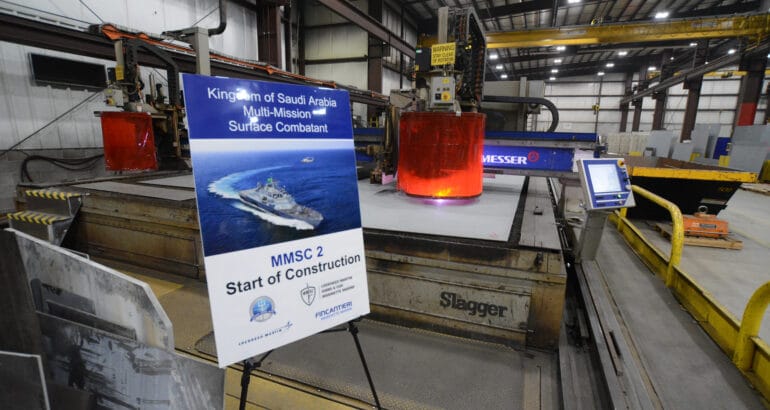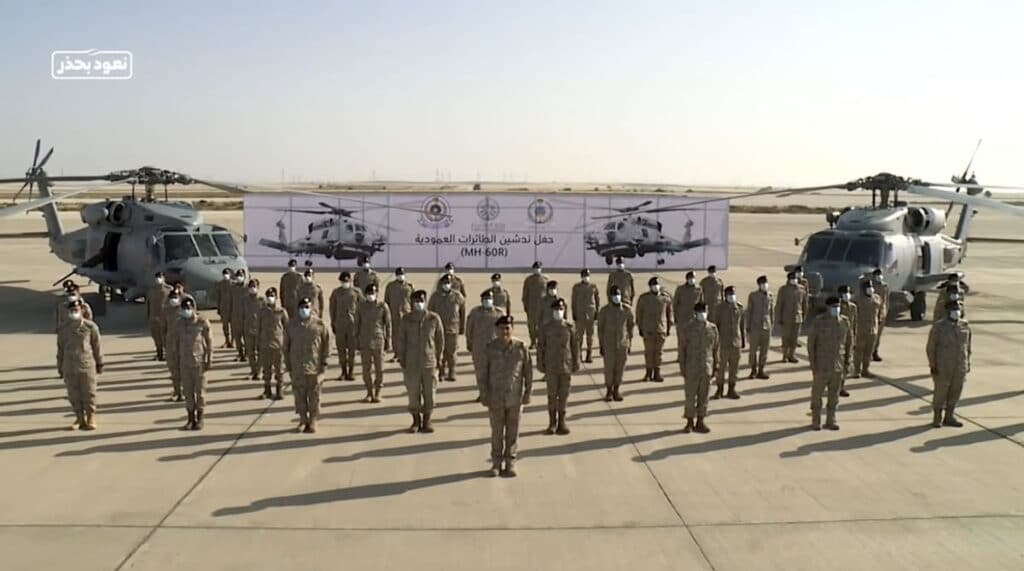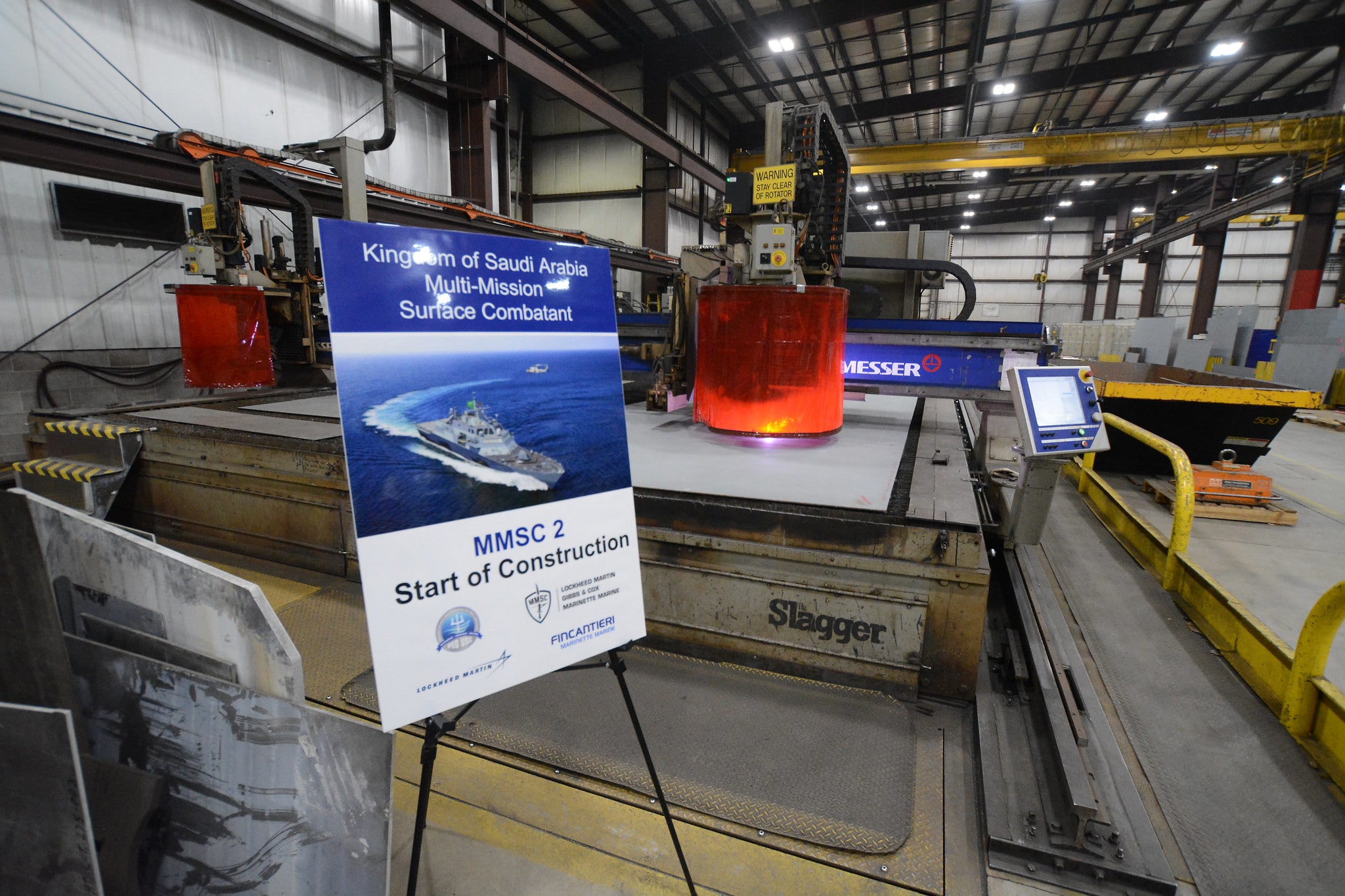Are we talking about the same thing here? Littoral patrol ships is quite an understatement.

Lockheed Martin picture
Lockheed Martin Started Construction On Saudi Arabia’s 2nd MMSC
Lockheed Martin and Fincantieri started construction on the second Multi Mission Surface Combatant (MMSC) for the Royal Saudi Navy (RSN). A low key steel cutting ceremony took place on at Fincantieri Marinette Marine in Wisconsin in late January.
Xavier Vavasseur 16 Mar 2021
A Lockheed Martin spokesperson confirmed to Naval News that the first cut of steel for MMSC 2 was on January 28, 2021 and shared pictures of the event. The name of the ship has not been disclosed yet.
For the record, Lockheed Martin was awarded a contract totaling $450 million to begin the detailed design and planning for construction of four Multi-Mission Surface Combatants (MMSC) to be built at Fincantieri Marinette Marine shipyard back in July 2018. The vessels are being procured as part of a modernization program for the RSN’s eastern fleet called SNEP II (Saudi Naval Expansion Program). Steel cutting for HMS Saud, the first ship-in-class took place on
28 October 2019.
MMSC is based on the Freedom-class Littoral Combat Ship of the U.S. Navy. It utilizes the COMBATSS-21 Combat Management System, built from the Aegis Combat System Common Source Library, enabling anti-air and anti-surface capabilities in a small surface combatant platform. With proven combat management system lineage, Lockheed Martin’s MMSC has the interoperability necessary for today’s joint and allied naval force maneuvers.
“We are pleased the Kingdom of Saudi Arabia has selected the Multi-Mission Surface Combatant to support its Royal Saudi Naval Forces fleet,” said in July 2018 Joe DePietro, vice president, Lockheed Martin Small Combatants and Ship Systems.
Artist impression of Royal Saudi Navy MMSC and MH-60R helicopter. Lockheed Martin image.
The July 2018 contract award was preceded by a $481 million FMS award in March 2018 and followed by another $282 million award in November 2018.
The Saudi MMSC will be fitted with 8x Mk41 vertical launch systems for ESSM surface to air missiles, a SeaRAM launcher on top of the helicopter hangar, 8x Harpoon anti-ship missiles, a BAE Systems Bofors 57mm main gun and 2x Nexter Narwhal 20mm remote weapon systems as secondary artillery. The sensor suite includes a Hensoldt TRS-4D AESA Radar, 2x SAAB CEROS 200 radar and optronic tracking fire control director, Argon ST WBR-2000 Electronic Support Measure and Threat Warning System and a variable depth sonar.
Royal Saudi Navy’s MH-60R Romeo
Induction ceremony of the first MH-60R “Romeos” of the Royal Saudi Navy in December 2020. Saudi MoD picture.
The RSN is also procuring MH-60R Romeo to be deployed from these veseels. According to
Lockheed Martin, paired with world’s most advanced maritime helicopter, the MH-60R, the MMSC will have a robust anti-submarine mission capability that is fully interoperable with the U.S. Navy and its coalition partners.
The first MH-60R maritime helicopters were inducted during an inauguration ceremony on 23 December 2020. During the ceremony, Commander of the Royal Saudi Navy, Lieutenant General Fahd bin Abdullah Al-Ghafili, said the Romeo features the latest technologies and systems, which will enhance the capabilities of the RSN to face all challenges and threats in the region. Saudi Arabia has 10 “Romeos” on order. The first delivery took place in 2018.
So far, the Romeo has been selected by the navies of the United States, Saudi Arabia, Denmark, Australia, India, Greece and South Korea. The U.S. Navy is the main operator of the MH-60R with 289 units in its fleet. It acts as the primary anti-submarine warfare and anti-surface warfare helicopter in the fleet.
Lockheed Martin and Fincantieri started construction on the second Multi Mission Surface Combatant (MMSC) for the Royal Saudi Navy (RSN). A low key steel cutting ceremony took place on at Fincantieri Marinette Marine in Wisconsin in late January.

www.navalnews.com
I am not aware of any such plans but does anyone in KSA's neighborhood have those type of destroyers? I don't think that anyone in the Muslim world have ships in that class to begin with.
If USA would export the Arleigh Burke-class destroyer, I am sure that KSA would try to buy it.
What destroyer options would you have in mind for the RSANF? I personally had the South Korean KDDX-class destroyer in mind whenever (if) opens up for export if Western destroyer options are unavailable.









